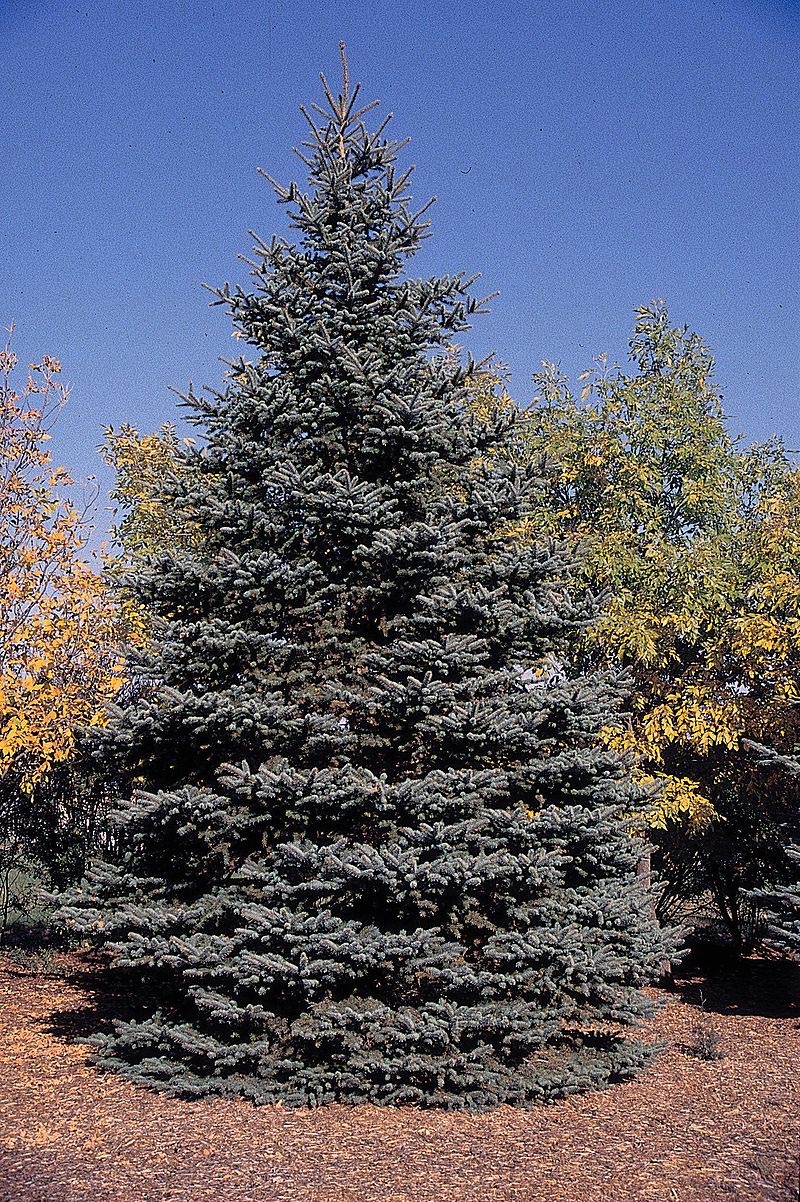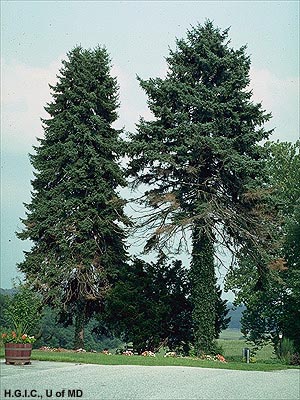Name That Tree
By Gil Medeiros, Fairfax Master Gardener
 This one may be too easy for many of you. Native to North America but not Virginia, this tree nevertheless adorns many landscapes in our area. Sometimes used as a cut Christmas tree, it is distinctive for its color and shape. This tree is easy to identify from the car while driving through the neighborhood. Here are your choices:
This one may be too easy for many of you. Native to North America but not Virginia, this tree nevertheless adorns many landscapes in our area. Sometimes used as a cut Christmas tree, it is distinctive for its color and shape. This tree is easy to identify from the car while driving through the neighborhood. Here are your choices:
a. Fraser fir (Abies fraseri)
b. Colorado spruce (Picea pungens)
c. Alaska cedar (Chamaecyparis nootkatensis)
d. Canadian hemlock (Tsuga canadensis)
e. Alberta spruce (Picea glauca)
If you answered Colorado spruce, you are correct! It is also commonly called Colorado blue spruce. I left out the “blue” because that really would be too easy. The color is so distinctive that some landscape designers refuse to use it. They contend that it does not blend well with other components of the landscape. The color hasn’t daunted homeowners, however. These trees are ubiquitous in the local landscape.
A common mistake committed by homeowners is to underestimate the mature size of the tree. It will grow to 40-60 feet high and 20 feet wide in the suburban landscape, often too big for the selected site. Dennis Hinkamp of the Utah Cooperative Extension cautions, “Buy the dog, not the puppy.” He says these trees are very “cute” when small. This tempts the homeowner to buy several at a time. Colorado spruce is a moderate grower so it takes 15-20 years for it to grow out of scale.  That leaves plenty of time to sell the house and move on before the tree overwhelms the landscape.
That leaves plenty of time to sell the house and move on before the tree overwhelms the landscape.
These trees do remarkably well in the Northern Virginia landscape, considering that zone 7b is the end of their range. They grow as far north as zone 4a. It is also remarkable that this tree, which originated in alkaline Rocky Mountain soil, seems to thrive in our acidic clay. It prefers full sun to part sun.
Here are the identification keys for Colorado spruce:
• Bluish green needles 1 to 1 1/4 inches in length.
The needle tips become sharp to the touch on a mature tree.
• Pyramidal and symmetrical shape (Christmas tree). The branches are horizontal.
• Cones are brown, cylindrical, 2 ½ to 4 ½ inches in length.

Cytospora canker disease is advanced in the tree on the right
Refrences
• Buy The Dog, Not The Puppy When Shopping For Conifers,
USU Extension
• Cytospora Canker of Spruce, Publication: HG 400, University
of Maryland Extension Home and Garden Information Center
• Colorado Blue Spruce (Picea pungens), Iowa State University
Forestry Extension